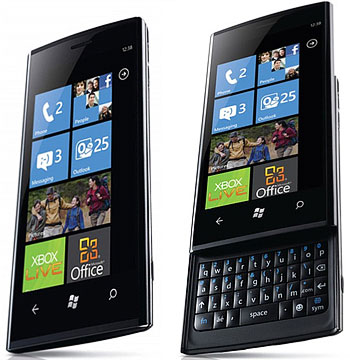
This CES was full of surprises — from Microsoft announcing Windows on ARM, to both AMD and Intel coming up with solutions no one had seen coming, to Nvidia building a Super ARM blended graphics/processor chip.
And the TV company making most of the announcements wasn’t Panasonic, Sony or Samsung — it was little Vizio, which probably gave a lot of TV executives a bit of heartburn. I’ll get into some of the surprises of CES this week.
I’ll close with the product of the week: the Dell Venue Pro, the one device I couldn’t live without at CES.
Microsoft Scares the Crap out of Intel and AMD
Microsoft started the show with one hell of a surprise; it announced that the next version of Windows is going to be on ARM. This is the same processor class that runs products like smartphones and iPads. Until now, Windows has been x86 only, and the last time Microsoft tried to go processor-independent was when it developed a version of Windows NT in the late 1990s for DEC Alpha (DEC is no longer around), MIPS (MIPS is mostly used for embedded systems today), and almost built one for SPARC.
None of them panned out, but then Windows NT wasn’t a high-volume version of Windows. Also, the firms backing the alternatives were either weak or didn’t want Windows on their stuff, and we were chasing performance — not battery life and size.
In addition, Intel, the primary x86 backer, had been really pissing Microsoft off — first by heavily funding Linux, and then by developing its own Linux distribution for smartphones. Intel made these moves because it was unhappy with the support it was getting for its smartphone efforts. That did serve as a wakeup call for Microsoft — and when Intel partnered with Nokia on a common Linux platform, that wakeup call became a full-on air raid alarm. That got Microsoft to make the decision to support ARM for the next generation of Windows. Surprise!?!
However, x86 — the parts from Intel and AMD — does still have the advantage, because decades of existing software and drivers work on that platform. Both platforms will be in market at the same time, and the customer will be the one to make the choice.
In addition, folks don’t like change much, and that means the ARM solution must have enough of an advantage to drive customers to it. Intel and AMD have between two and three years to make sure it doesn’t, and Qualcomm, Nvidia and TI have the same time to dramatically increase their advantages. This is a race, but x86 starts with a lead in what historically has been the critical area.
Nvidia’s Super ARM Surprise With a Cherry on Top
Immediately jumping on this opportunity was Nvidia, which announced it was developing its own hybrid processor. Intel announced Sandy Bridge — its hybrid chip — at CES, and AMD countered with Brazos, its first Fusion hybrid processor. These played well at the show, but with all the focus on ARM — and the three primary ARM vendors in a clear race for this new Microsoft business — everyone was blindsided by Nvidia’s move to create something like Fusion Sandy Bridge with ARM at the core of the solution. This suggests that Nvidia has moved out aggressively to give both AMD and Intel a run for their money.
Nvidia has one big advantage the other ARM vendors lack, and that is a long history of both working with Microsoft and in the x86 markets. If there is any company in the market that can create a part that embraces the x86 driver sets and that understands the PC issues better than Nvidia — and is also is an ARM vendor — I don’t know of it.
This was an incredibly gutsy move by Nvidia and another of the big surprises of the show. Oh, and the cherry is the sweet, thin, sexy hardware that will likely result from this development.
Intel Locks up Content
I don’t think anyone saw this coming either. Intel struck a huge deal with the major studios to allow streaming of first-run movies exclusively on Intel PCs. Granted, this would be vastly more powerful if PCs were a bit more successful as set-top boxes, but recall that Google TV uses Intel technology and is due for a refresh this year, and you may get an idea of what will be in it.
There are a lot of movies I’d like to see when they first come out that I don’t, because I just don’t feel like going to the theater. I would pay a premium to enjoy those films in my own home, sitting on my own couch, and drinking my own beer. (Theaters tend to frown on my coming in with a six-pack, and the drive-in thing sucks on a Saturday afternoon).
This could dovetail nicely with Intel’s Smart TV efforts and make the next generation of Google TV much more interesting. In addition, I’m writing this from my hotel room at CES, and it would actually be really cool to enjoy a first-run movie on my laptop after writing this column.
AMD Wireless PC-to-TV Surprise
There are a lot of companies, including Intel, that are pushing wireless connections to TVs. Dell was even showcasing this technology with its new Alienware PC connected to a Vizio (more on this later) TV. But most of these solutions were unique, and finding a laptop and a TV with the same wireless connection that you’d want to buy seemed unlikely.
Well, AMD was showcasing a technology it had licensed that would stream video from any WiFi-enabled AMD PC to any WiFi-enabled TV that would play flash movies. Finding a Smart TV that supports Flash (including that Vizio) is getting increasingly easy, and virtually all AMD laptops support WiFi.
Basically, the software turns your PC into a video-streaming server, and you find it with the TV, and you can then play games, watch movies, or do presentations on your TV without messing with any physical connections. The amazing thing is that it doesn’t require any additional hardware — it is a software application.
Vizio, the Mouse That Roared
Vizio is a very small TV company that generally sells in Walmart or Costco. It builds good TVs that sell at bargain prices. I don’t think Samsung or Sony worried about Vizio much. At CES, though, Vizio went a little announcement nuts. It basically announced many that many of its next-generation TVs would have every technology but the kitchen sink — wireless PC connections, OnLive gaming, content partnerships, passive glass 3D (think affordable glasses you can also use in theaters) — in huge sizes at affordable prices.
Its biggest TV with all of this stuff, a whopping 72 inches, was expected to price out at US$3,500 before discounts — and there are almost always discounts. I think I know what I want for my birthday. Oh, mama…. I’d make it product of the week but it isn’t shipping yet. When it does…
Wrapping Up: Surprise?!?
I wasn’t really expecting any of this stuff, and I doubt many of you were either. The Microsoft move was particularly disruptive, but it put Nvidia back in the center of the game, and the competition will put Apple on notice.
Now, think for a minute — what do you think Apple is going to do knowing Microsoft is going to jump on ARM? It is a controlling company; it has its own version of ARM… Hmmm, and ARM Mac? I wouldn’t be surprised — but after this CES, it’ll likely be a while before much of anything surprises me…
Product of the Week: Dell Venue Pro
 A few weeks back, I made the HTC HD7 my product of the week, but you may recall that I said I’m really not a fan of screen-only phones and wanted a keyboard. In addition, I started with a BlackBerry, and I prefer a vertical keyboard over the larger horizontal one, because you can one-hand it.
A few weeks back, I made the HTC HD7 my product of the week, but you may recall that I said I’m really not a fan of screen-only phones and wanted a keyboard. In addition, I started with a BlackBerry, and I prefer a vertical keyboard over the larger horizontal one, because you can one-hand it.
This is important, because I’m almost always carrying something with my other hand. Well, the Dell Venue Pro delivered. This Windows Phone 7 phone — I am really getting to love this new operating system — became my go-to device at CES. I left my laptop in my hotel room and lived off it during the day.

I’m still not writing any books on the phone, but I can do long emails (when I can sit down and am not running to meetings), and the keyboard means I miskey far less often then when I’m using the screen.
The only thing I’m missing from my HTC is the application that turned on the LED light. No one has written one for this phone that does that. All I can find are apps that just turn the screen white, which is hardly the same thing.
Other than this nit, this has become my new favorite phone. It is nice to hold, has a solid feel, and I’m loving the keyboard a lot. As a result, the new Dell Venue Pro is my product of the week. Best Smartphone I’ve used so far.
Rob Enderle is a TechNewsWorld columnist and the principal analyst for the Enderle Group, a consultancy that focuses on personal technology products and trends.





















































